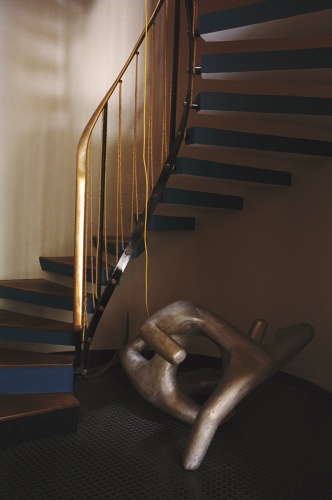Frith Kerr brings together female designers and artists for suffrage centenary
The creative director has curated an exhibition that pairs up the work of contemporary designers with historic artists to mark the cultural contributions of women in the 20th and 21st centuries.

An exhibition at the historic former home of architect Ernö Goldfinger and his family brings together works by female designers and artists across the ages.
The show, called Ahead of the Curve: Women Artists at 2 Willow Road, has been put together by Studio Frith, spearheaded by creative director Frith Kerr, as part of a wider celebration by the National Trust which manages the house, on the 100th anniversary year of women first getting the vote.
Kerr invited a range of current female designers to respond to the works by women artists in the existing art collection in the house, aiming to start “a conversation across time and space” through the works.
Kerr says: “We discovered that Ernő and Ursula [Goldfinger’s] collection really was a product of the intellectual and artistic social circle they entertained at their home, 2 Willow Road. So we decided to make those conversations come alive by inviting six other designers to respond to an artist each.”
Pairings
Designers who took part in the project included Ilse Crawford, Lyn Harris, Gitta Gschwendtner, Nina Chakrabarti, Roksanda Ilincic and Kitty Travers.
Kerr, who was responsible for choosing the pairings, positioned each design piece in close proximity to each artwork, aiming to place them “as if they inhabit the house”.
Providing some examples, she says: “Lyn Harris’ Smoke Candle sits on Ernő’s desk, underneath Prunella Clough’s painting of an industrial view.
“Gitta Gschwendtner’s Soft Light hangs in the beautiful stairwell directly above Helen Phillips’ bronze sculpture Untitled (Suspended Figure) which was originally suspended in the This is Tomorrow exhibition at the Whitechapel in 1956.”
Another example of pairings is a black bench designed by Isle Crawford, placed opposite Bridget Riley’s painting The Fugitive.
“Ilse Crawford’s work always considers human needs and desires at the centre of everything,” Frith says.
“A discourse may be silent, as simple as looking at a painting or active like dancing in a living room with friends. And of course, the bench invites company and conversation between visitors to the house.”
There are also little cards, like invitations, written by the designers explaining their responses, placed around the house for visitors to read.
Asked about any stand-out highlights, Frith says: “It is impossible to choose as each piece is designed to be seen in its own right as much as part of the show.
“I think many visitors to a historic house will be surprised to look in a freezer for an exhibit — I asked Kitty Travers, an extraordinary creator of ice creams, to create a cake for Lee Miller — she used layers of ice cream of pea pods and parsley, blackcurrant leaves and green gooseberries – which should smell like Lee’s garden in Muddles Green.”
On some days, visitors can join in expert-led tours around the house and exhibition, while on others, they can explore it freely.
Women and Power
The show is part of The National Trust’s year-long, nationwide Women and Power programme, which aims to shine a light on women’s history on the centenary of them first being able to vote in a British parliamentary election.
Frith says: “I think it’s important to explore the different narratives of ‘history’, and this was a very pertinent and rich story to tell now.”
The house at 2 Willow Road in Hampstead, London, was designed by Hungarian architect Ernö Goldfinger for his family to live in. It was completed in 1939, shortly before the outbreak of World War Two.
The architect is largely associated with the Brutalist architectural movement and is known for championing residential high-rise buildings, which were unpopular at the time. Some of his most famous work includes the Trellick Tower in Kensal Town, London, which is now Grade II* listed.
The Goldfinger family lived at 2 Willow Road for over 50 years until it was eventually handed over to the National Trust in 1994 as a good example of a Modern Movement house.
“Ground-breaking”
It is known for design details that were considered “ground-breaking” at the time, according to the National Trust.
Spread out over three floors at the front and four at the back, features aimed to make the most of the space and provide flexibility include a spiral staircase, sliding room dividers and built-in cupboards.
The family acquired a selection of modern art, some of which can be viewed at the house, along with some of their furniture and belongings.
The house at 2 Willow Road will also be open to visitors during the upcoming Open House London weekend.
Ahead of the Curve – Women Artists at 2 Willow Road runs until 27 September 2018 at 2 Willow Road, Hampstead, London NW3 1TH. Entry is free. For more information, head here.
All photos © Arianna Lago, courtesy of Frith Kerr.




-
Post a comment




